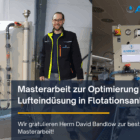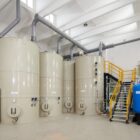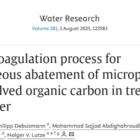Sludge dewatering is a central process in industrial wastewater treatment and sewage technology that aims to reduce the water content of sludge and increase the dry matter. This reduces the volume of sludge and makes it easier to dispose of, recycle or transport the sludge. Sludge dewatering is particularly important in industries with high sludge volumes, such as the chemical industry, food processing, metal processing and municipal wastewater treatment plants.
Table of contents
Importance and objectives of sludge dewatering
The main purpose of sludge dewatering is to increase the dry substance (DS) of the sludge, which both reduces the costs of transportation and disposal and facilitates handling and possible further use. The dry matter concentration of a dewatered sludge is usually between 20 and 50 %, depending on the process and sludge composition. Sludge dewatering also has direct ecological advantages, as it reduces the mass to be disposed of and thus reduces the use of resources and the environmental impact.
Technical processes for sludge dewatering
Various mechanical and thermal processes are used for sludge dewatering. The choice of process depends on the composition of the sludge, the degree of drying required and the specific requirements of the plant. Common processes include
1st decanter:
- Decanters use centrifugal force to efficiently separate solids from liquids. The sludge is fed into the rotating bowl of the decanter, where the high rotational speed pushes the solids towards the outer wall. The liquid collects inside and is discharged separately. Decanters are particularly suitable for sludge with a high concentration of solids and offer a continuous and effective method of sludge dewatering.
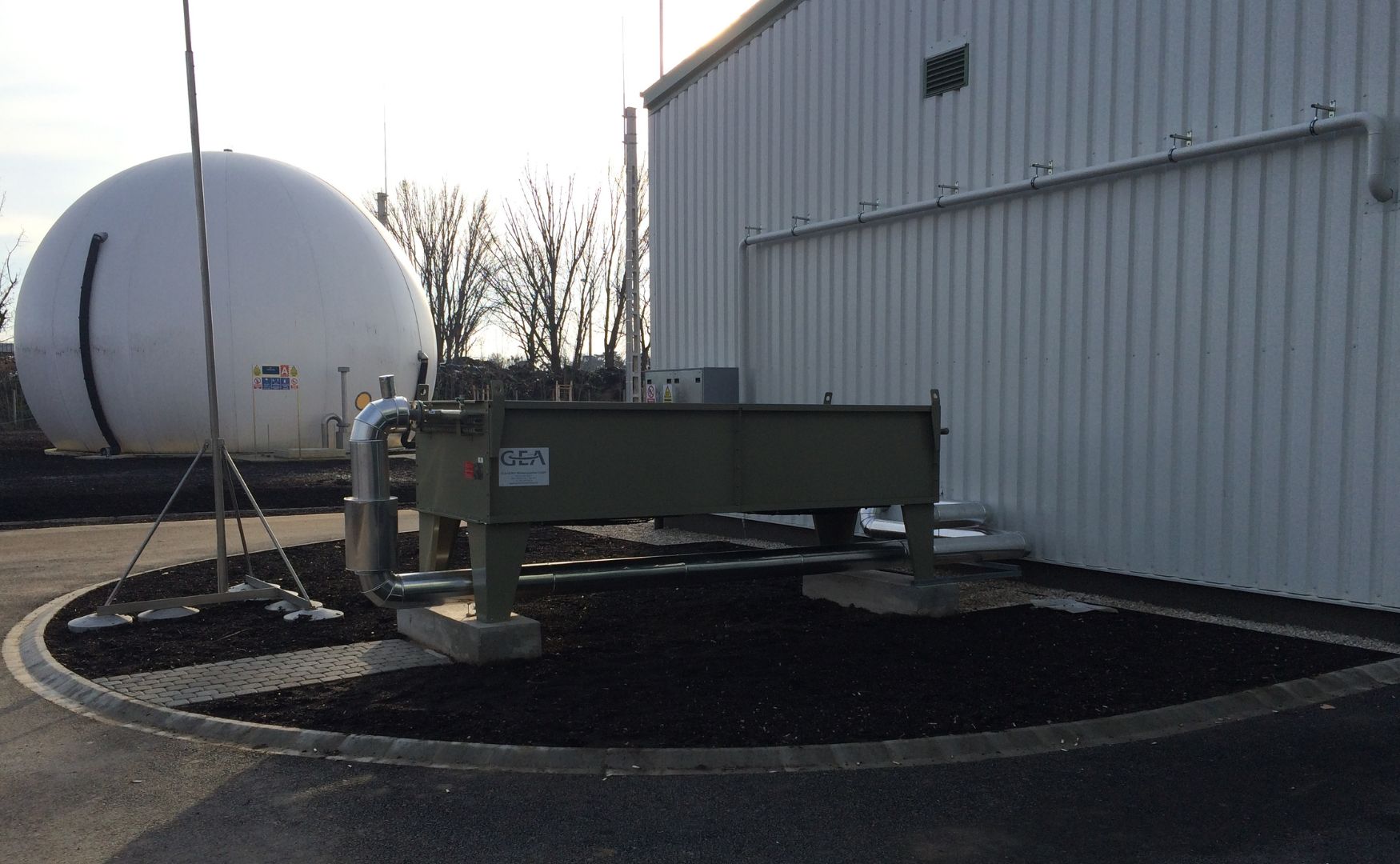
Photo: Photo of a decanter for dewatering sewage sludge from our ALMA BHU GMR biogas plant
2. filter presses:
- The filter press, especially the chamber filter press, works on the principle of pressure filtration. The sludge is pumped into chambers between filter plates, which are covered with filter cloths. The water is pressed out of the sludge under high pressure, while the solids remain behind as filter cake. The filter presses are ideal for dewatering sludgy wastewater and can achieve high dry substance values.
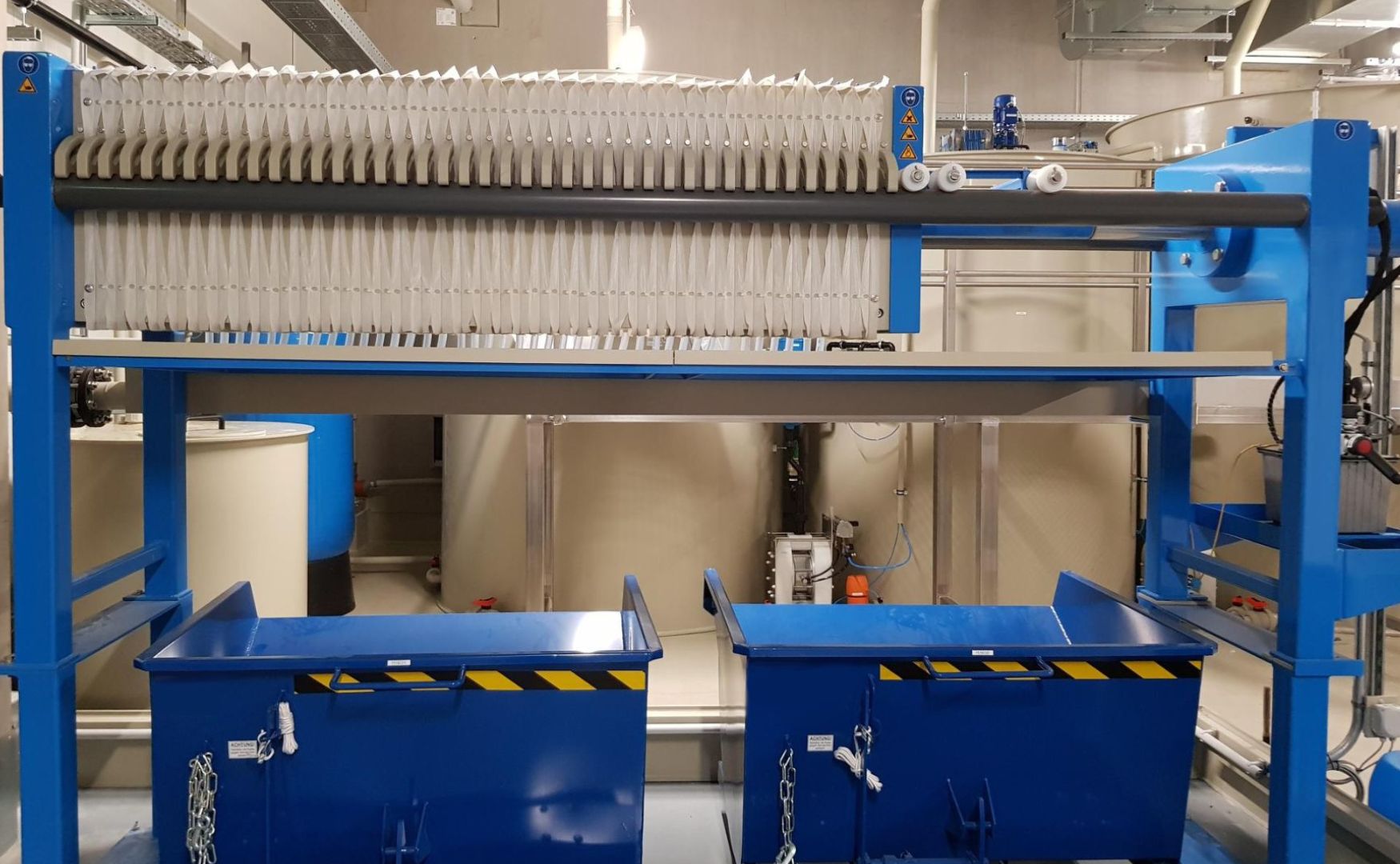
3. screw press (screw press):
- These devices press the sludge through a narrow chamber in which a pressure gradient is created. The screw presses are particularly suitable for fibrous or coarse sludge and can be operated continuously, which makes them attractive for certain industrial applications.
4. belt filter press:
- The belt filter press feeds the sludge onto an endless, porous belt. The sludge is pressed between two belts that move through a series of rollers, which squeeze out the water. This process is particularly efficient for large volumes of sludge and achieves moderate dry substance concentrations.
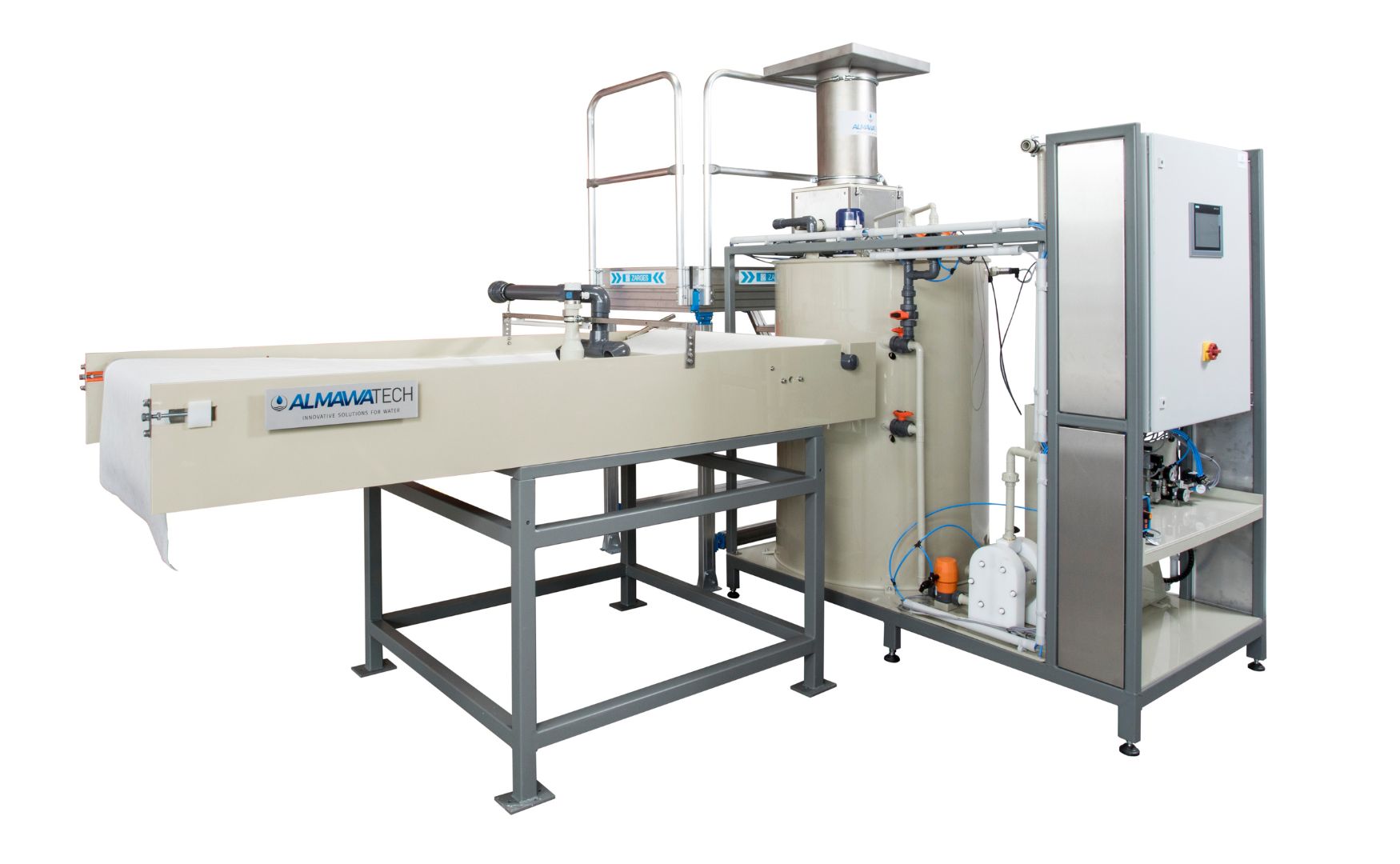
Photo: Compact precipitation and flocculation system ALMA CP Compact with belt filter
5. drying:
- Thermal drying reduces the water content of the sludge through evaporation, which enables significantly higher dry substance values (up to 90 %). However, this method is very energy-intensive and is usually only used for particularly high sludge reduction requirements.
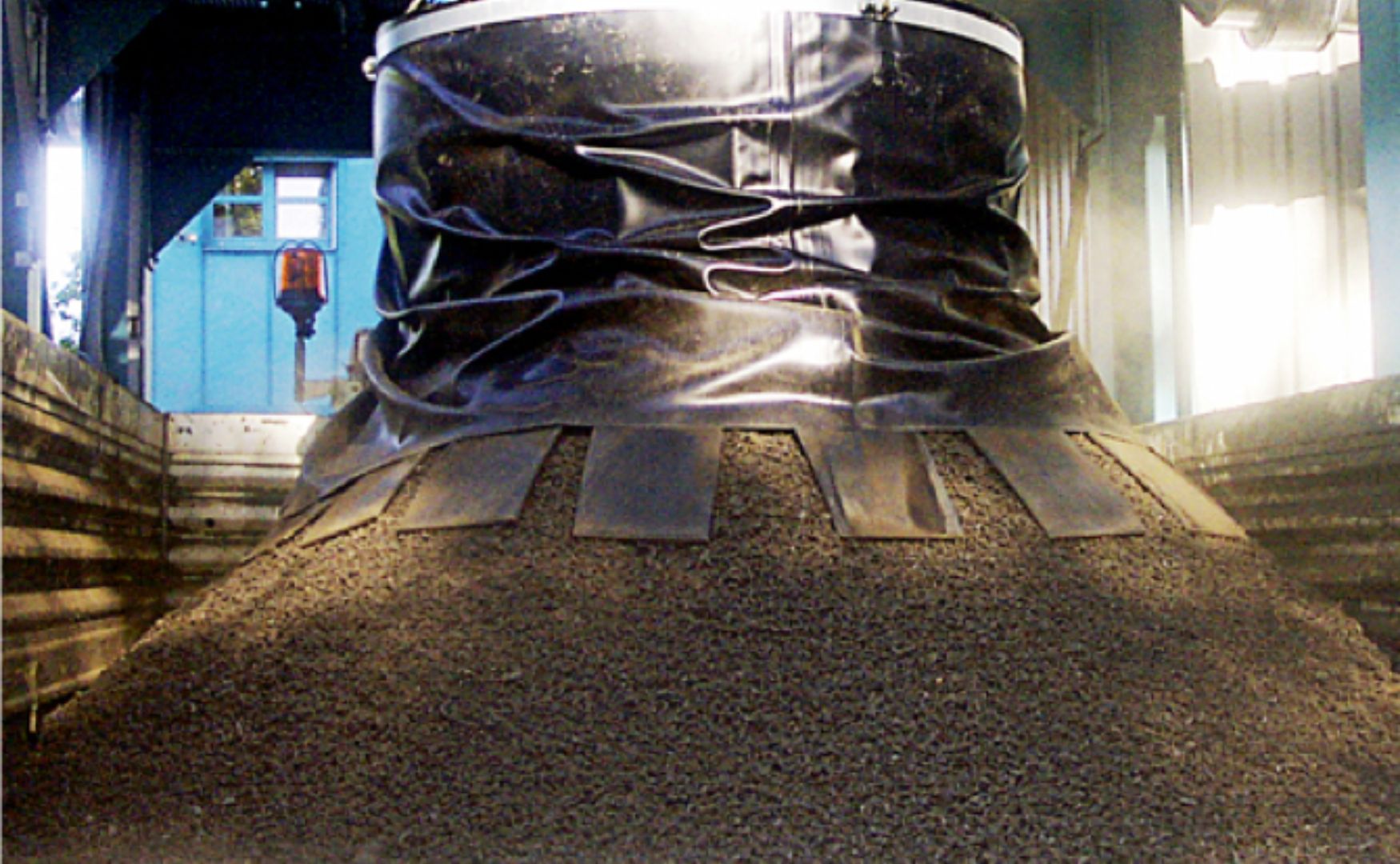
Photo: Sludge drying and pelletizing of our ALMA BHU STR system
Factors influencing sludge dewatering
The efficiency of sludge dewatering is influenced by several factors:
Sludge composition:
- The chemical composition, particle size and consistency of the sludge have a direct influence on dewaterability. Fine-grained or organically contaminated sludges tend to hold more water, while mineral or fibrous sludges are easier to dewater.
Conditioning of the sludge:
- Prior to sludge dewatering, the sludge is often conditioned to improve the separability of solids and water. For this purpose, precipitants or flocculants are added to increase the particle size and make it easier to separate the water.
Pressure and filtration time:
- The pressure applied in the filter press or centrifuge and the duration of the filtration cycle have a significant influence on the dewatering result. Higher pressures and longer filtration times lead to a higher dry substance content, but also increase energy consumption.
Type of filter medium:
- The choice of filter cloth or filter medium is crucial for the efficiency of sludge dewatering. Filter cloths with the right pore size and material resistance support rapid filtration and facilitate the removal of the filter cake.
Sludge dewatering applications
Sludge dewateringis of central importance in numerous industrial sectors:
Municipal wastewater treatment plants:
- In municipal sewage treatment plants, sludge dewatering is used to reduce the volume of sewage sludge. The dewatered sludge is then either composted, used for agricultural purposes or disposed of in landfill sites.
Food and beverage industry:
- Sludge dewatering is necessary here in order to dispose of organic residues and wastewater from production. The dewatered sludge is either disposed of as waste or used in biogas plants to generate energy.
Chemical and pharmaceutical industry:
- These industries often produce highly contaminated and sometimes toxic sludge. Sludge dewatering facilitates handling and reduces the amount of waste for disposal.
Metal processing and electroplating:
- The dewatering of metal-containing sludge is crucial for removing heavy metals and hazardous substances from wastewater and disposing of the residual materials safely and cost-effectively.
Challenges and optimization of sludge dewatering
Although sludge dewatering is effective, it also poses challenges that need to be considered in advance:
High energy consumption:
- Depending on the process, sludge dewatering can be energy-intensive. Energy consumption is a relevant cost factor, especially in thermal processes or at high pressures.
Maintenance and cleaning of the systems:
- The filter cloths and hydraulic systems in filter presses and other dewatering units are subject to high wear and tear and must be serviced regularly to ensure the performance and service life of the system.
Treatment of the resulting filtrate:
- The filtrate produced during sludge dewatering often requires post-treatment, as it may still contain dissolved substances that do not comply with the wastewater limit values.
Pilot tests to optimize sludge dewatering
We offer pilot tests to optimally determine the specific requirements of sludge dewatering for your application.
These tests can be carried out either in our technical center or directly on site. We analyze the dewaterability of the sludge, the appropriate choice of precipitants and the optimal filtration parameters. Based on these tests, we can select the most efficient processes and equipment for your specific application in order to achieve maximum dry substance concentration and optimize disposal costs.
Conclusion
Sludge dewatering is an indispensable process in industrial wastewater and sludge treatment that offers both economic and ecological benefits. By reducing the volume of sludge and increasing the dry substance concentration, transportation, disposal and processing costs can be significantly reduced. Choosing the right process and optimizing the process parameters are crucial for the efficiency of sludge dewatering and help to sustainably reduce operating costs and environmental impact.
For further information on our products, please feel free to contact us at any time!





